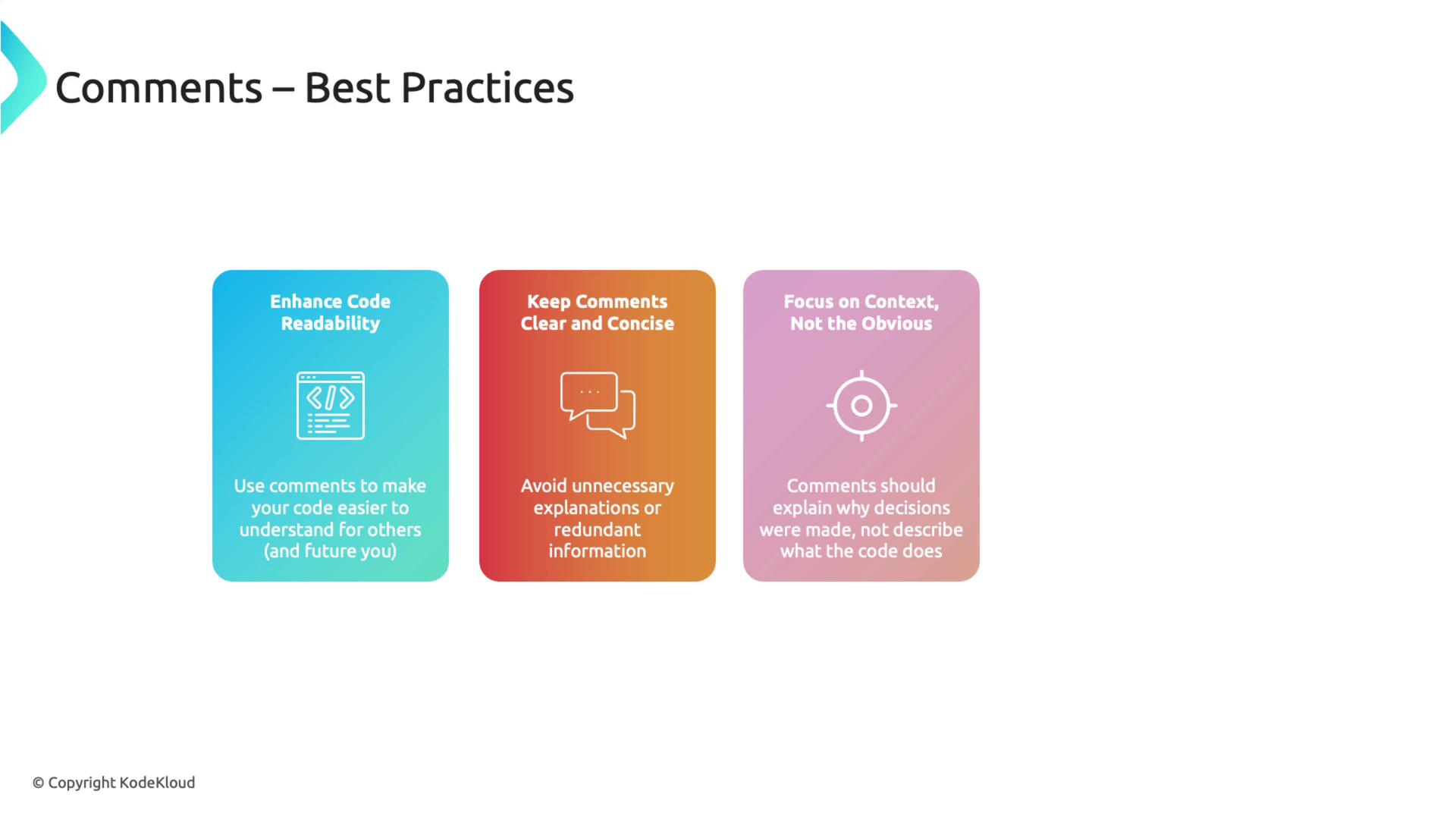Rust Programming
Rust Basics
Comments
In this lesson, you will learn about comments in Rust, why they are essential, and how to use them effectively to make your code more readable and maintainable.
What Are Comments?
Comments are lines or blocks of text in your code that the Rust compiler ignores. They serve as annotations to explain the purpose and functionality of your code, enabling you and others to understand your implementation decisions. Comments in Rust work similarly to those in many other programming languages.
Writing Single-Line Comments
Single-line comments in Rust begin with two forward slashes (//). Anything following these slashes on the same line is treated as a comment and is ignored by the compiler. Single-line comments are ideal for brief explanations or inline clarifications.
Below is an example of a Rust file (main.rs) that includes single-line comments above both the main function and a println! macro:
// This is a single-line comment explaining the function
fn main() {
// This line prints "Hello, world!" to the console
println!("Hello, world!");
}
These inline comments help clarify the purpose of different code sections.
Writing Multiline Comments
For longer explanations or to temporarily disable blocks of code, Rust supports multiline comments. These comments start with /* and end with */. You can optionally begin each new line within the block with an asterisk (*) to enhance readability.
For example:
/*
* This is a multi-line comment.
* It provides a detailed explanation spanning multiple lines.
*/
fn main() {
println!("Hello, world!");
}
The Rust compiler ignores any text within the /* and */, making this method ideal for extensive documentation.
Best Practices for Comments
Effective comments improve code readability and offer essential context about your coding decisions. Instead of merely describing what the code does, comments should explain non-obvious logic, edge cases, and critical decisions.
Best Practice Tip
Always aim for clear, concise, and context-driven comments. This ensures that future maintainers or collaborators understand the intent behind your code without having to infer details from the code itself.

Use comments judiciously to highlight important insights, keeping your code maintainable and accessible for both current and future developers.
Thank you for reading this lesson on using comments in Rust. For additional Rust programming tips and best practices, explore our other comprehensive guides.
Watch Video
Watch video content